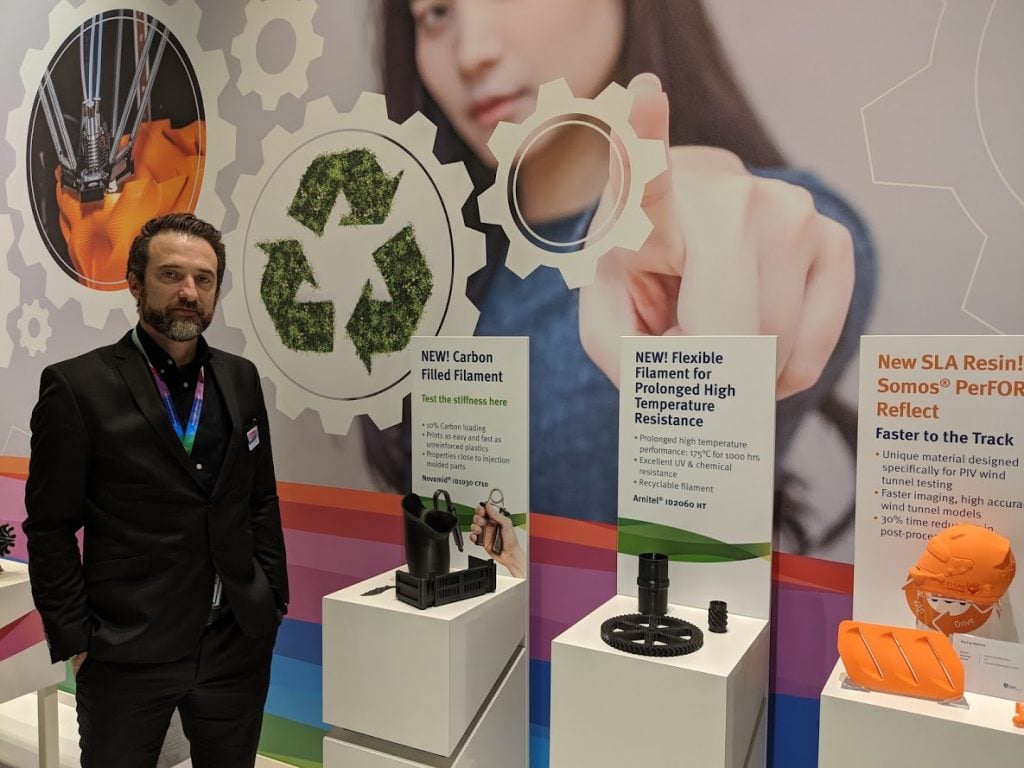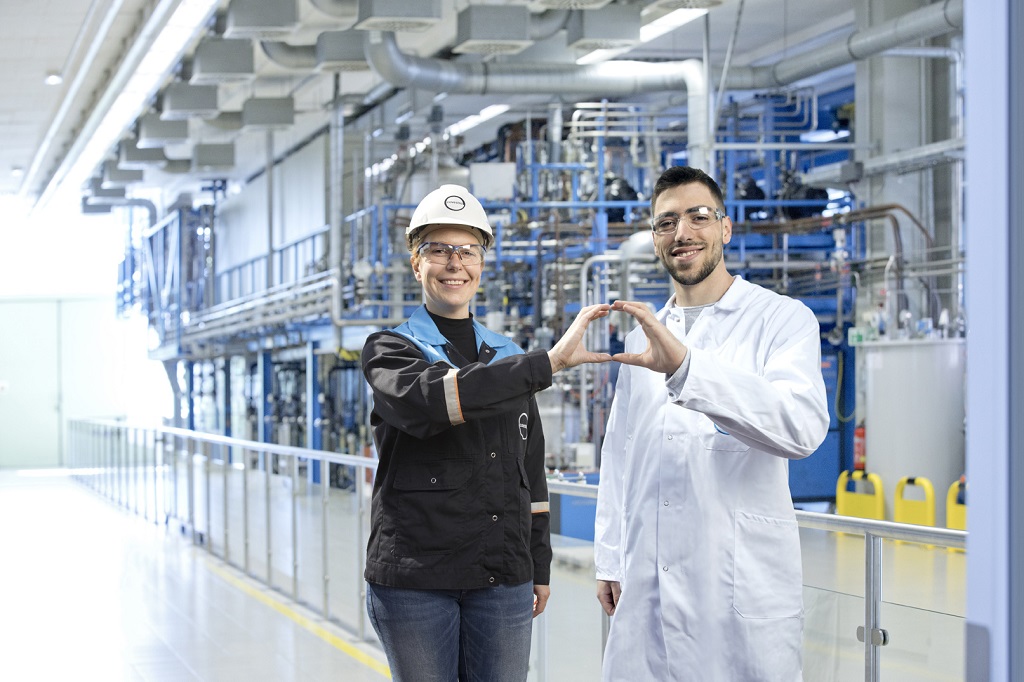
Last week, a major deal was announced as Covestro is acquiring business units from DSM, including the additive manufacturing business. We go to the source for more information on what that means for our industry.
DSM has been among the global giants to become a major player in 3D printing materials over the last few years. The company has become a mainstay at 3D printing events (when they’re held), as they have continued to develop, collaborate, acquire, and invest their way to a prominent positioning in additive manufacturing materials.
Covestro Acquires DSM Additive Manufacturing
But at the end of September, the company agreed to divest their DSM Resins & Functional Materials line of business to Covestro. DSM Additive Manufacturing falls under this umbrella, and from DSM’s perspective, not much detail was shared in the official press release for the move; they simply said:
“The proposed transaction is another step forward in DSM’s evolution as a purpose-led, science-based company operating in the fields of Nutrition, Health, and Sustainable Living.”
From Covestro’s perspective, certainly the inclusion of the AM business is a boon, and their press release explained:
“The acquisition diversifies Covestro’s industry exposure and also significantly strengthens the company’s positioning in attractive high-growth markets. Amongst others, Covestro will become one of the leading suppliers … in the attractive high-growth segment of 3D-printing materials, showing an average growth rate of more than 20%.”
They are very aware of the potential in that particular segment. But when it comes to DSM, the move caught many by surprise, myself included. The company has been so active in additive manufacturing, and very vocal about where the technology fits into their strategies, approaches, and umbrella of sustainability.
So I turned to Hugo da Silva, VP of DSM Additive Manufacturing Business Unit, who has filled in the blanks for us before in conversations about DSM’s participation in the 3D printing industry.
DSM Additive Manufacturing Acquired
“I read Kerry’s article, and that pretty much hit the high points,” he said of the business aspects as we opened our conversation.
That article was based on the two companies’ press releases rather than a first-hand perspective, so we quickly turned to more of the whys behind the whats.
“They acquired us because of our strong position in the market,” da Silva said of the transaction in a nutshell. “We’ll be joining forces, there will be more technologies, more people, more investment. Covestro is 100% a materials science company, and I think that’s very exciting actually. It’s good news in general for all of us.”
Indeed, Royal DSM has quite a reach beyond materials science. And DSM is, as it happens, rather larger than Covestro. It’s also significantly more developed in terms of additive manufacturing.
“I know a lot of people would expect the other way, like when we acquired from Clariant,” da Silva said, noting that DSM portfolio addition just a few months ago. “But it happens the opposite. They want to be stronger in 3D printing. They know that to grow their business would be very complex; many major players are already taking big steps for some time, they are late in the game. We [the AM business segment] were not the center of the attention, but there was the opportunity to put us in the deal, so they put us in the discussion. We talked about how to bring value to the market and to our customers. We are much bigger than they are, so it’s also more like we have a larger new investor than being inquired, this large new investor helping to grow the team further.”
The Covestro acquisition of DSM’s business segments has been an ongoing process. While it seemed a surprise move it was, unsurprisingly, not so out-of-the-blue as it felt from the outside. Indeed, da Silva confirmed, the move has been in the works “for quite some time.”
As the head of the AM business, da Silva was an integral part of the discussion for all that this move meant for DSM Additive Manufacturing. So, I asked, what does the acquisition mean for that whole team and business?
“We are moving all of us. Everything moves together: all the assets, the technologies, everything related to 3D printing, including every single member of the team, including myself,” he said. “I was part of the deal, I cannot leave as part of the deal. Basically we are changing the logo and continuing our business plan. Everything moves as before, no change is expected — just maybe new technologies and more people, which would be great for us.”
Covestro Acquisition Timeline
The agreement has been signed, and is now awaiting final approvals from regulatory and government entities to be finalized and realized.
Da Silva anticipates that everything will be finalized in the first half of 2021, though “we expect it to be much faster.” We may be seeing an integrated new business operation as early as Q1.
Should in-person events be possible again early in the new year, it is da Silva’s hope to appear at AMUG with the new joint team under the Covestro logo.
The pandemic, while it is impacting these events, did not slow down this deal.
“I can assure you this was very fast including in regular times; COVID was not an issue,” da Silva said of working out the acquisition. “We have so much synergy with them, I think they want to hurry up rather than slow down, so we can all start together next year as soon as possible, all in this business together.”
That synergy includes products, expertise, roadmaps, and an overarching focus on sustainability. Getting everything to come together may not be as difficult as it may first have sounded in this big move.
DSM Additive Manufacturing Portfolio
When it comes to all the work that DSM Additive Manufacturing has done, is in the process of doing, and has been planning to do, good news: the roadmap remains in tact, as does the full portfolio.
“They agreed with our business plan, all the partnerships, all the launches,” da Silva said of the Covestro team. “We still have a few product launches this year, these will still happen. We have more in process for next year.”
Among the projects-in-process are a focus on pellet 3D printing and on next-generation SLA materials. These projects and others will “keep moving forward, and we hope to even accelerate them,” da Silva confirmed.
Adding more to the roadmap is further access to more materials science with Covestro. That company has strengths in polyurethane and polycarbonate, which da Silva pointed out as being specifically interesting. These are “very unique technology platforms we didn’t have before and could be interesting technologies to add to our technology range.” While these areas are not currently in the works with a 3D printing focus, they may just be “very relevant to our 3D printing,” da Silva added, as “we hope to combine with other technologies we already have as DSM to take better and faster products to market.”
Covestro Market Access
On taking products to market, da Silva continued, we also see a strength in leveraging the new parent company’s extensive roots.
“They are very well connected in many markets that are a focus for us,” he said, “like the transportation market, especially automotive, as well as sports and lifestyle, footwear, and construction.”
Earlier this year, DSM announced progress on their 3D printed footbridge project, and this is an area where da Silva noted those construction connections will be a big benefit.
Next Steps

Overall, the move strikes da Silva as a major positive for not just his team, existing and expanded, but for the additive manufacturing industry as a whole.
“I’ve been doing my part to support this, we’ll call it backstage, because this is delivering on our expectation to deliver on 3D printing, to help the industry to grow faster,” he said. “Another giant materials company is becoming stronger in the field, which is a great message to the 3D printers in the world, as more giant companies invest.”
Overall, the feeling for the acquisition is that “the combination between DSM and Covestro is stronger than DSM alone.”
The opportunity arose, that is, and additive manufacturing wasn’t necessarily the main goal of the larger (Equity Value of €1.6 billion) acquisition — as a reminder from the announcement:
“The transaction will include all of DSM’s Resins & Functional Materials businesses, including DSM Niaga, DSM Additive Manufacturing and the coatings activities of DSM Advanced Solar.”
But with the AM business moving too, Covestro opens up to new possibilities with an already top-notch team. And that team remains vertically integrated, as some of the other segments involved — like resins — are moving over, as well. All in all, the idea is that the move makes sense for the two companies’ focuses as well as the broader future of the business activities.
And that future looks bright for this particular AM business, indeed. Moving it over to Covestro isn’t simply a divestiture for DSM, it’s sort of releasing the baby bird from the nest, ready to fly with new capabilities and assets.
“It’s in the DNA of DSM; DSM has been investing in and divesting businesses for years. If a new home can accelerate the business, I think DSM would not stand in the way if that’s the case, and I think that’s exactly what happened,” da Silva said.
We’ll be hearing much more from da Silva and his 3D printing materials team as they continue on their existing roadmap and in the coming year refine it further to take advantage of the new talent and assets they’re gaining access to with Covestro.
Via DSM Additive Manufacturing and Covestro
